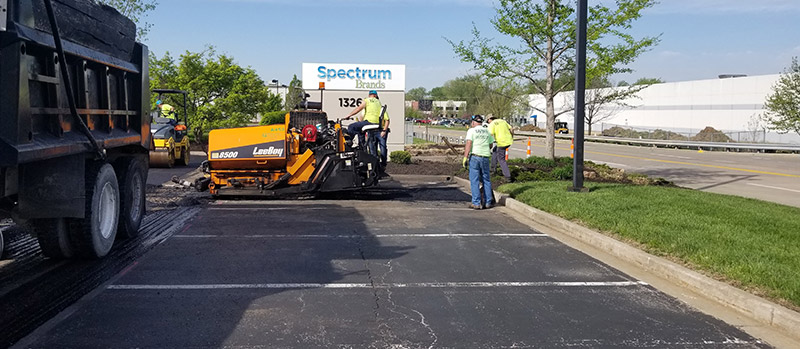All about A1 Professional Asphalt & Sealing Llc
Table of Contents10 Simple Techniques For A1 Professional Asphalt & Sealing LlcThe Ultimate Guide To A1 Professional Asphalt & Sealing LlcTop Guidelines Of A1 Professional Asphalt & Sealing LlcThe Greatest Guide To A1 Professional Asphalt & Sealing LlcThe Greatest Guide To A1 Professional Asphalt & Sealing Llc

The oil in a cars and truck engine is not just oil. It has a variety of additives to boost the car's efficiency. These consist of polymers, viscosity modifiers, heat stabilizers, extra lubricants, and wear additives. The REOB has all the ingredients that were in the waste oil along with the wear steels from the engine (mainly iron and copper).
However, by making numerous blends making use of various REOB samples and different asphalt binders, the variations mainly can be balanced out. A number of States gave samples of well-known REOB structure to TFHRC scientists, who analyzed the examples to compare the percent of added (understood) REOB to the found (checked) quantity. The evaluations showed a similar percent of included and discovered REOB.
A1 Professional Asphalt & Sealing Llc Fundamentals Explained
None of those States understood that the asphalt they were getting contained REOB. One State insisted its samples had no REOB - https://www.blogtalkradio.com/a1asphaltsealng.
Of the 1,532 samples tested, 12 percent included REOB, and some included substantially high degrees of it at 1020 percent. The highest degree was 34 percent in an example from Texas, which TxDOT had actually utilized in a patching compound. This screening also exposed the presence of phosphoric acid in 11 percent of the examples, and 2 percent included ground tire rubber.
2 years earlier at TRB's annual conference, the Federal researchers held an REOB workshop and presented the searchings for of their research laboratory assessments to a standing room-only group. Although some companies do not especially outlaw REOB, they do impose physical examinations that avert its useeffectively a ban. what is cold asphalt?. Others do not prohibit it by spec, however have arrangements with asphalt distributors to prevent making use of REOB
The Main Principles Of A1 Professional Asphalt & Sealing Llc
A handful do permit REOB, some within certain restrictions. Ohio and Texas limit degrees to less than 5 percent of the asphalt. To develop a dependable test approach that all States can use, the TFHRC scientists established a round-robin examination plan. The participants are 11 State highway firms (Illinois, Massachusetts, Minnesota, Mississippi, Montana, North Carolina, Oklahoma, South Carolina, Texas, Vermont, and Wyoming), 2 independent testing labs, the Ministry of Transportation in Ontario, Queen's College in Ontario, and an Ontario paving specialist.
In total amount, the scientists prepared and delivered 720 blends. The participants are evaluating the samples independently using the guidelines supplied by the TFHRC scientists. The round-robin testing over at this website is nearly completed, and TFHRC is in the process of gathering the outcomes. The result will certainly be a suggested AASHTO examination approach that any kind of State can adopt and utilize (what is cold asphalt?).
The pavement with REOB, which is situated 0.6 mile (1 kilometer) from the sidewalk without REOB, has the same subgrade, traffic thickness, and environment. The sector of Highway655 with 5 to 10 percent REOB showed substantial breaking. In this instance, the presence of REOB was the recognized root cause of cracking at a low temperature levels.
A section of examination sidewalk in Minnesota (MN1-4) located to have REOB likewise cracked prematurely. The pavement performed well for the first 3 to 4 years, but then started to split.
Things about A1 Professional Asphalt & Sealing Llc
The examinations were not comprehensive, however they showed that at levels of 6 percent or even more, the tensile strength of the asphalt dropped substantially. At a degree of 3.5 percent REOB, the variation in the physical test methods was higher than the effect of REOB. In reality, it was hard for scientists to analyze whether REOB was existing.

One binder parameter considered is the difference in between the reduced temperature level important requirements temperature level for rigidity (S) in the flexing light beam rheometer and the bending light beam rheometer creep incline (m-value) noted as Tcritical. TC = TC (S) TC (m-value). Evaluation of this parameter is still ongoing. 2 independent research teams, one from AASHTO and the other from the Asphalt Institute, wrapped up that even more study is needed on using REOB in asphalt.
Previously, all asphalt screening determined engineering residential properties such as stiffness. These tests do not reveal what materials had actually been contributed to the asphalt. One example gotten during the TFHRC study had a really unusual evaluation. The sample had the following examination outcomes: Superpave PG 64-28 with a heat grade of 67.3 Tcritical on the flexing beam of light rheometer was 6.7 degrees Celsius.

Excitement About A1 Professional Asphalt & Sealing Llc
These outcomes show there are weak points in the standard design testing procedures that might be exploited. The producer may have a financial benefit and the item passes all the standardized examinations, but the product may not be useful to making sure long-lasting performance. To address this problem and the development of brand-new asphalt ingredients and extenders, TFHRC is starting a research program to make use of portable spectroscopic devices, x-ray fluorescence spectroscopy, and Fourier transform infrared spectroscopy to enable analyses to be done in the field instead of needing to take samples back to the laboratory.